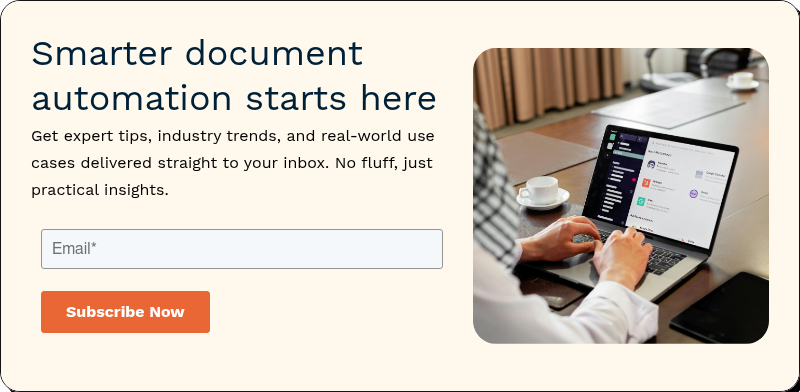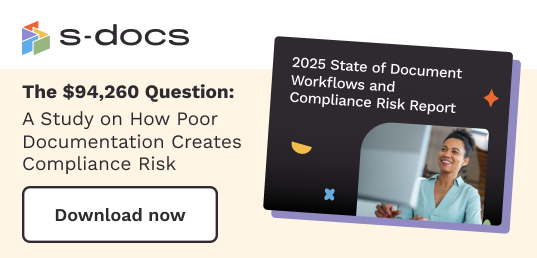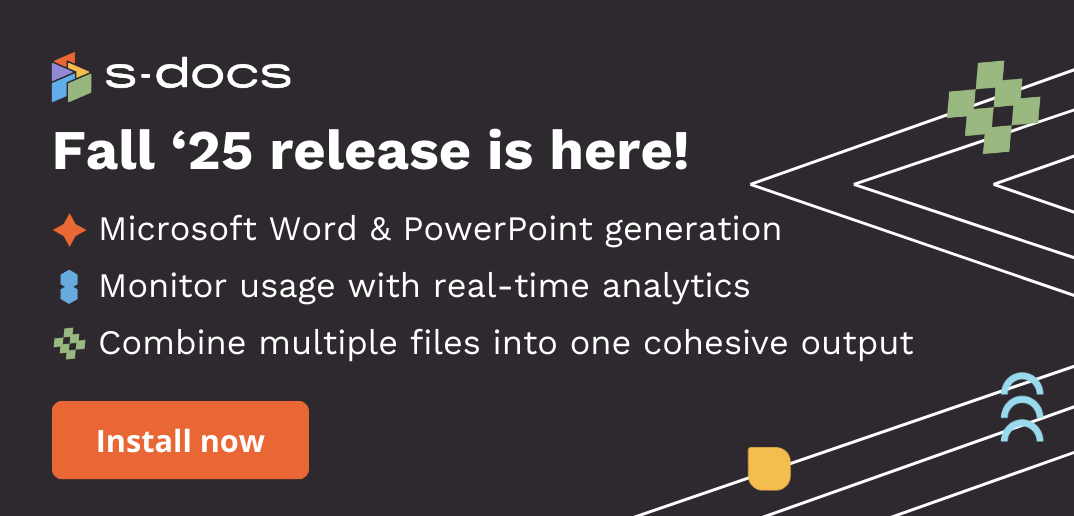For years, Salesforce reports and Excel have worked in tandem, serving as the backbone for data analysis and decision-making in many organizations. However, document automation and other advancements in technology now offer more efficient and robust alternatives for managing and interpreting business data - especially data that gets shared externally with customers, partners, or other stakeholders.
The limitations of a Salesforce report export to Excel
Have you ever felt limited by a Salesforce report export to Excel? While exporting reports to Excel is a common practice, it comes with several drawbacks. For starters, the process can be time-consuming and prone to errors. You might find yourself spending hours tweaking the Excel sheets to make them presentable. A common complaint is that a Salesforce export of opportunities to Excel often lacks the dynamic and interactive elements that can make data analysis more efficient and insightful.
Understanding the value of Salesforce reports and dashboards
Salesforce reports and dashboards are powerful tools for data analysis and visualization. They help you monitor key metrics, track performance, and make informed decisions. However, the default export options can limit the potential of these tools. When you export a report from Salesforce to Excel, you lose the interactivity and customizability that make Salesforce dashboards so valuable. This is where document automation tools come into play.
Introduction to document automation tools
You may be looking for a more efficient, customizable, and less error-prone way to handle a Salesforce report export to Excel. Document automation tools could be the answer. They simplify the document creation process by leveraging predefined templates and data sources, automating what used to be a manual task and creating a final export that meets your most precise requirements.
The basics of document automation
Document automation tools can pull data from Salesforce, apply formatting, and generate documents in various formats, such as PDFs or Word documents.
How document automation tools enhance reporting
By using document automation tools, you can do more than just export a report from Salesforce. These tools allow you to create well-designed, dynamic reports that go beyond the basics. You can include charts, tables, images, and other visual elements to make your reports more engaging and easier to understand.
Key benefits of document automation for Salesforce reporting
There are several reasons to automate Salesforce reports. Here are some key benefits:
Showcasing more data
Document automation tools allow you to showcase more data than a standard Salesforce report export to Excel. You can pull in data from multiple objects into a single document and create comprehensive reports that provide a deeper insight into your business operations.
Creating well-designed, shareable reports
With automation tools, you can create visually appealing reports that are easy to share with stakeholders. You can format your reports to match your brand guidelines and include visual elements that make the data more accessible and engaging.
Easy access for customers and partners
Document automation makes it easy to provide access to reports for customers and partners. You can set up automated workflows that generate and share reports via email or through Experience Cloud portals if you have a self-service experience, ensuring that the right people have access to the information they need.
Reporting automation
Automation tools can handle the repetitive task of generating reports, saving you time and reducing the risk of errors. You can schedule reports to be generated and distributed automatically, ensuring that your team always has the latest data at their fingertips.
Using conditional logic
One of the key advantages of document automation is the ability to use conditional logic. This allows you to create dynamic reports that adapt based on the data. For example, you can highlight specific metrics if they exceed certain thresholds or include different sections based on the type of data being reported.

How to set up and enhance Salesforce reporting with S-Docs
S-Docs enables you to get more out of your salesforce reports by providing powerful customization and automation capabilities. Here's how you can set up and enhance your Salesforce reporting using S-Docs:
- Create a New S-Docs Template: Start by creating a new template in S-Docs. This will serve as the foundation of your automated reports.
- Specify the Data to Pull: Define the data you want to include in your document. You can pull fields or related lists from related objects or even data from unrelated objects using SOQL queries. This flexibility allows you to build a comprehensive and dynamic report.
- Format Your Document: Customize the layout and formatting of your document. Add dynamic variables to place data, and use S-Docs' tools to create a polished and professional report.
- Use the Template: Once your template is ready, you can use it just like any other S-Docs template. Set it up to be automatically generated and stored in a repository, or allow customers and partners to generate it through an Experience Cloud portal.
Streamlining your reporting process with document automation
Document automation streamlines your reporting process, making it more efficient and effective. By moving beyond the limitations of legacy methods and outdated practices, you can create dynamic, well-designed reports that provide deeper insights and are easy to share.
S-Docs lets you create report documents right within Salesforce using the familiar tools you already use. Being completely native, it operates with lightning speed and offers more power compared to off-platform alternatives. Additionally, it ensures your data remains entirely secure by never sending it outside of Salesforce. Want to find out more? Request a demo today or contact sales@sdocs.com. Happy reporting!






.png)
.png)
.png)